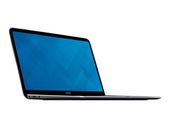Main
Model
Price
Advantages
Processor / Chipset
CPU
Max Turbo Speed
Number of Cores
Cache
64-bit Computing
Chipset Type
Features
Monitor
Diagonal Size
Image Brightness
display
LCD Backlight Technology
Widescreen Display
Monitor Features
Type
Display Resolution Abbreviation
Resolution
Image Aspect Ratio
Touchscreen
TFT Technology
RAM
Memory Speed
Technology
Installed Size
Memory Specification Compliance
Configuration Features
memory
Max Supported Size
Operating System / Software
OS Provided
Type
Audio & Video
Graphics Processor
Memory Allocation Technology
Integrated Webcam
Sound
Features
Audio Codec
Hard Drive
Type
Capacity
SSD Form Factor
Notebook Camera
Integrated Webcam
Miscellaneous
Color
Case Material
Image Color Disclaimer
Features
Compliant Standards
Color Category
System
Notebook Type
Dimensions & Weight
Width
Depth
Height
Physical Characteristics
Weight
Input
Type
Features
Input Device
Backlight
battery
Capacity
Cells
Technology
Run Time (Up To)
Communications
Wireless Protocol
Wireless Controller
Features
Connections & Expansion
Interfaces
Memory Card Reader
AC Adapter
Output
Input
Videos
Summary
The XPS 13 uses a better CPU in comparison with the Yoga 3 Pro: Intel Core i5 (3rd Gen) 3317U that runs at 1.7 GHz clock speed versus Intel Core M 5Y71 that runs at 1.2 GHz, Intel Core M 5Y70 clock speed. This is very important difference between these models because powerful processor will allow a notebook to do multiple things at the same time.
The Yoga 3 Pro is equipped with a better QHD+ screen resolution which will allow the notebook owner to enjoy working with graphics programs.
The Dell XPS 13 has a better battery life as it is equipped with 47 Wh cell that is 3 Wh bigger in comparison to the Yoga 3 Pro cell. It means that this notebook can be used for a longer time without charging. The Yoga 3 Pro weighs 2.62 lbs that is 0.38 lbs less than the weight of the Dell XPS 13.
The Yoga 3 Pro has 5 advantages and the Dell XPS 13 only 2 so the Yoga 3 Pro will be the best buy. Check the lowest price on Amazon.


